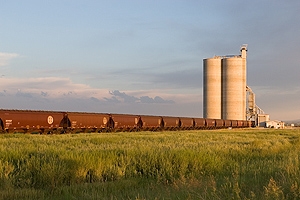BNSF expands Bakken Oil transport capacity to one million barrels per day
Written by Jenifer Nunez, assistant editor
BNSF has increased capacity in 2012 to enable the railroad to haul one million barrels per day out of the Williston Basin in North Dakota and Montana. This increased capacity will allow the energy industry to continue the record expansion of oil production in the Williston Basin and to ship the new production to markets throughout the U.S.
“Historically, oil and gas producers have used pipelines to transport crude from production to refineries and ultimately on to end users,” said John Lanigan, BNSF executive vice president and chief marketing officer. “Because this shale development growth came about so quickly, there has been a shortage of pipeline capacity to deliver production from new unconventional sources to coastal refiners. BNSF has responded quickly to enable producers to move crude to the most attractive markets and secure the best prices.”
Today, through direct and interline service, BNSF’s network reaches all major coastal and inland markets and it directly serves 30 percent of U.S. refineries in 14 states. BNSF currently has 1,000 miles of rail line in the Williston Basin area and serves eight originating terminals with two more scheduled to be completed by the end of 2012. BNSF connects to 16 of the top 19 oil producing counties in Central and Western North Dakota and five of the six oil producing counties in Eastern Montana.
“BNSF has been hauling Bakken crude out of the Williston Basin area for over five years. In that time, we have seen the volume increase nearly 7,000 percent, from 1.3 million barrels in 2008 to 88.9 million in 2012,” said Dave Garin, BNSF group vice president, Industrial Products. “We see this trend continuing and we are committed to serving this growing market now and in the future.”
BNSF is investing $197 million in 2012 on projects in North Dakota and Montana. Some of those projects include 2,188 miles of track surfacing, two new inspection tracks, raising track at Devil’s Lake, replacement of 121 miles of rail and about 332,000 rail ties, as well as signal upgrades and equipment acquisitions.





